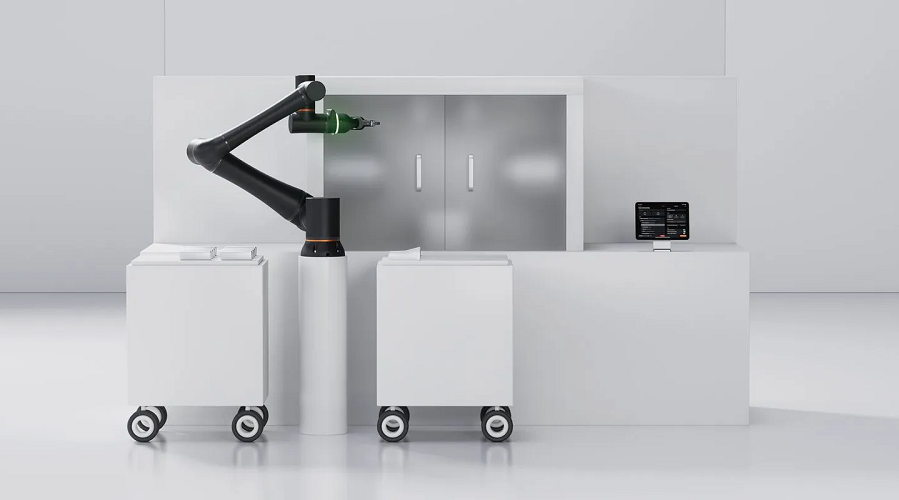 AI
AI
 AI
AI
 AI
AI
Standard Bots Inc., a startup that develops robotic arms for the manufacturing and logistics sectors, has secured $63 million in fresh funding to enhance its technology.
The company announced the Series B round today. It said that General Catalyst led the raise. The venture capital firm was joined by the Amazon Industrial Innovation Fund, Samsung Next and several returning backers.
Standard Bot’s flagship product is a $37,000 robotic arm called the RO1. It can lift up to 40 pounds and has a reach of about four feet. The RO1 comes with a portable base, which removes the need to embed the robot into a factory floor’s concrete floor and thereby reduces installation costs.
Under the hood, the system ships with a built-in graphics processing unit. The RO1 uses the chip to run artificial intelligence models that allow it to complete tasks even in the face of unexpected challenges. The algorithms can maneuver the robotic arm around any objects that might be in its way, as well as adapt to production line changes.
The RO1’s onboard AI also promises to ease the process of teaching the system new tasks. Historically, configuring a robotic arm to automate a new manufacturing workflow involved weeks or months of manual coding. The RO1 can be programmed through a no-code interface, which Standard Bots says reduces both the duration and cost of configuration changes.
The robot is also capable of learning through demonstration. Workers can perform a certain task, such as welding together two components, in front of the RO1’s built-in camera and the onboard AI software will automatically learn to replicate the workflow. For customers that wish to program the robot in a more conventional manner, Standard Bots provides application programming interfaces that can be connected to custom code.
“Historically, robotics projects required a team of PhDs, multiple years of research, and deep pockets — and even after all that, use cases were often limited,” said Standard Bots co-founder and Chief Executive Officer Evan Beard. “We’re on a mission to make advanced, adaptable robots accessible to all.”
The company says that the RO1 can carry out common manufacturing tasks such as welding, sanding and polishing. It’s also capable of feeding raw materials into CNC machines, a type of system commonly used to make plastic and metal parts. To ensure quality standards are met, a company can configure out of its RO1 robots to inspect newly produced parts and take any faulty items it finds off the production line.
Standard Bots says that its systems also have uses beyond the manufacturing sector. A logistics company, for example, could use a fleet of RO1 robots to automatically package products into cases before shipping. The systems are likewise capable of loading merchandise onto pallets.
Standard Bots will use its newly raised capital to develop a new generation of robotic arms. The company detailed that those machines will be available in “new sizes,” which suggests they may be capable of performing tasks the RO1 doesn’t support.
Standard Bots also plans to enhance the software that powers its robots. As part of the effort, the company is training a new AI model that is designed to “enhance robotic capabilities” for customers and uses the Transformer neural network architecture. The Transformer architecture underpins many of the most advanced large language models on the market including OpenAI’s GPT-4o.
Support our mission to keep content open and free by engaging with theCUBE community. Join theCUBE’s Alumni Trust Network, where technology leaders connect, share intelligence and create opportunities.
Founded by tech visionaries John Furrier and Dave Vellante, SiliconANGLE Media has built a dynamic ecosystem of industry-leading digital media brands that reach 15+ million elite tech professionals. Our new proprietary theCUBE AI Video Cloud is breaking ground in audience interaction, leveraging theCUBEai.com neural network to help technology companies make data-driven decisions and stay at the forefront of industry conversations.